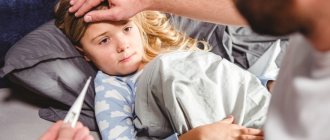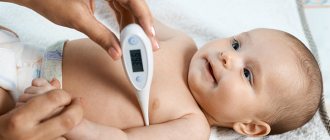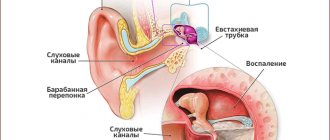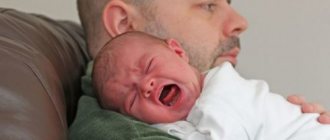How to use Candide for thrush in newborns
Candida for newborns with thrush is a salvation for mothers who do not know how to cure their baby.
Thrush in infants is common; every 3rd baby suffers from it. The disease is caused by the Candida fungus, which is normally part of the microflora of the oral cavity, genital mucosa, and intestines. In young children, immunity is not yet sufficiently developed, so active reproduction of Candida yeast can be observed in the microflora. The provoking factor can be either a serious infectious disease or banal regurgitation. Medicine offers a large selection of remedies for the treatment of thrush; Candide for infants is considered one of the inexpensive and proven ones. But before using the drug, you need to see a pediatrician so that the diagnosis is confirmed, otherwise there is a risk of harming the child.
Why Candida attacks babies more often
The mentioned fungal microorganisms are extremely sensitive to changes in conditions in their habitat. An increase in acidity (even a slight one), as well as an excess of glucose, are ideal conditions for them. They arise when the biocenosis of the membranes is disrupted in favor of opportunistic microorganisms. The second factor for the “rampant” candida is decreased immunity. Normally, the secretion of the mucous membranes suppresses their growth.
A child’s body is “easy prey for fungi. Due to the natural imperfection of the immune system, infants are especially likely to experience aggression. In children over the age of one year, the pathology is much less common. However, immunity is finally formed only by adolescence. This means that every child is “under the gun” of a yeast-like fungus.
Newborns encounter a lot of microbes even during the birth process - in the mother's birth canal. If a woman suffered from candidiasis during pregnancy or suffers from a chronic form of the disease, the baby will be infected with candida during childbirth. Doctors reduce this risk by cleaning the birth canal with antiseptics in preparation for delivery. However, no one can exclude latent carriage of the mother.
If the child has not become infected with the fungus from his mother or in the maternity hospital, the collision will occur at home - through natural contact with the skin and mucous membranes of the parents, as well as contaminated household objects.
With strong immunity and healthy microflora, candidobacteria will be immediately suppressed. If antibiotics are taken or the defenses are weakened after an acute respiratory viral infection, the child may develop candidiasis. Since the highest concentrations of candida are found in the mouth, the oral mucosa is the first to be affected.
Girls may also develop genital candidiasis if the surface of the genital organs is contaminated with the fungus.
It is believed that the disease occurs more often in artificially produced people. This fact has no scientific confirmation. Pediatricians say that if the hygiene of feeding devices is observed, the chances of a child developing thrush are minimal. While the health of infants depends entirely on the hygiene of the mother.
Composition of the drug, mechanism of action
1 percent Candide for children consists of the main active ingredient – Clotrimazole. It helps alleviate the condition, eliminates unpleasant symptoms, and kills Candidiasis. Clotrimazole inhibits the synthesis of ergosterol, an important component of the fungal cell; without it, a hole forms in the membrane, vital substances leak out and stop accumulating. Gradually, due to damage, the number of cells decreases, reproduction stops until Candida completely disappears.
Clotrimazole is used in most antifungal medications. You can also buy Candide in the form of powder, gel, drops, tablets, and cream.
Forms of release of the drug and its features
The cost of the medicine, depending on its release form and package size, varies from 70 rubles. up to 500 rub. You can find “Candide” in the following forms:
- Solution . Used to treat fungal infections on any part of the body. Per 1 ml of solution there is 1 mg of clotrimazole (active substance). Glycerin and propylene glycol are used as binding components. The external solution is colorless, transparent, and its consistency is viscous. Sold in 15 ml plastic containers, should be stored in places with temperatures below 25 degrees. One package costs 270-340 rubles.
- Powder . For external areas as a powder or dilute in liquid, use as a solution for the mouth, genitals. In 1 g. contains 10 mg. clotrimizole. The powder contains binding ingredients - talc, starch, silicon dioxide, fragrance. It looks like a white, fine-grained powder, packaged in sachets or plastic containers of 30 g. The cost of one package is 300 - 400 rubles.
- Cream . It is used for external areas of the skin; on the recommendation of a doctor, you can treat a newborn. For 100 gr. cream is 1 gram. clotrimazole also contains auxiliary components - paraffin, wax, petroleum jelly, water, sodium phosphate, propylene glycol. Appearance – white, creamy mass in an aluminum tube of 20 g. One tube costs from 400 rubles. up to 600 rub. Store at a temperature no higher than 25 degrees.
Candide in any form is sold without a prescription; you can find it in any pharmacy.
Cost and analogues
Candide is available in pharmacies without a prescription. Average cost of different dosage forms:
| Dosage form | Average price, rub. |
| Cream Candide, 20 g | 250 |
| Solution for external use, 20 ml | 360 |
| Solution (drops) for topical use, 15 ml | 270 |
| Candide powder powder, 30 g | 360 |
As analogues of Candida, you can use any drug whose main component is clotrimazole. When choosing a similar medicine, you need to carefully study the instructions and listen to the doctor’s recommendations. The most popular analogues of Candida: Kanison, Rederm, Candiderm, Candibene, Antifungol, etc.
Instructions: how to use
Soak a cotton swab in the medicinal solution and gently apply to the affected area inside the mouth. For a surface of 5-6 cm, 5-10 drops of the product are required. You need to apply it every day 2-3 times. The effect of therapy is noticeable already on the 4th day of treatment, but you cannot stop, otherwise the fungus will quickly return. After the visible symptoms have completely disappeared (usually this happens in 1-2 weeks) for the purpose of prevention, it is necessary to use Candide for thrush in newborns for another 2 weeks.
If you apply cream or ointment to the outer part of the skin, then before using Candida you should wash the affected area with soap and warm water and wipe with a dry towel.
Instead of a solution, you can use a powder by first dissolving 5 mg of the substance in one glass of liquid. Apply the diluted powder in the same way as a solution or lotion.
It is necessary to treat fungal rashes only after breastfeeding has ended. To prevent re-infection or damage to the mother’s breasts, it is necessary to lubricate the nipples with Candida solution 1-2 times a day in between feedings.
The instructions for use of Candida indicate that for thrush in newborns, the course of treatment should not exceed 4 weeks (28 days). The decision to continue drug therapy should be made by the doctor.
Cream
The drug is available in 20 g tubes; 1 g of cream contains 10 mg of clotrimazole. Used to treat diaper dermatitis in children under one year of age. Most often, this pathology develops in children with disturbed microflora in the intestines. It manifests itself as areas of redness on the skin, which usually occur in the perineum, but can spread to other areas.
The area of skin to be treated must be washed and then dried with a soft cloth. Apply the product to the affected area. A column of cream measuring 0.4-0.5 cm is needed to treat an area equal to the palm of an adult. Rub the cream into the skin with light massage movements. Repeat application up to two to three times a day.
The duration of treatment is determined individually, but on average it is about a week, in some cases the course lasts longer. Usually the positive effect becomes noticeable already on the second or third day of using the drug.
Indications for use
To find out whether it is worth using Candide, you need to decide whether the child has thrush or not. Infantile thrush is divided into three categories based on severity:
- Easy. Small areas of the oral mucosa are covered with a white coating, small grains. They can easily clean any part of the oral cavity without causing any damage. Most often, the tongue, cheeks, palate are affected by the fungus, and less often – the gums and uvula.
- Average. The density of white grains is higher; they can no longer be simply removed. If you try to remove mechanical plaque, bleeding wounds and ulcers remain. The area with cheesy rashes is red, inflamed, swollen, and covered with a white, transparent film.
- Heavy. Almost the entire oral mucosa is affected, right down to the tonsils. The curdled rashes have tightly merged with the inner surface of the mouth; it is not possible to remove them mechanically. Due to the large formation of grains, the baby may have difficulty swallowing, be capricious, and refuse food.
Why is it wrong to diagnose yourself? Concerned mothers may accidentally mistake traces of milk for a manifestation of thrush. Therefore, it is recommended to go to see a doctor.
If you are worried about the harm of tests for a newborn baby, don’t. To determine the type of yeast and their susceptibility to clotrimazole, a laboratory research method is used. Using a cotton swab or small forceps, a sample of white plaque is taken, it is examined under a microscope, if it is a fungus, it is tested for susceptibility to a particular active substance. The method does not cause any harm to the child.
Side effects
Candida drops for newborns should be used with great caution; if they enter the stomach in excess, they cause vomiting, diarrhea, and nausea. In addition, a negative reaction from the skin and mucous membranes may occur, such as:
This reaction to the drug does not occur in everyone, and goes away on its own within a day. But if the side effect lasts longer, immediately seek medical help and temporarily stop using the solution.
The drug "Candide" in any form is good for treating thrush in newborns. Its advantage is a low coefficient of penetration into the bloodstream of the mucous membrane, a reasonable price, and the high sensitivity of the active substance clotrimazole against fungus. But due to the fact that the effect of the medicine on children under 2 years of age has been partially studied, it is worth going to see a doctor before using it.
Contraindications for the treatment of candidiasis
Although Candida solution for thrush in newborns is prescribed with high frequency, consulting a doctor will be useful. Not every child will benefit from the drug; an allergic response may occur, accompanied by Quincke's edema or more negative manifestations - anaphylactic shock. With the help of an examination, anamnesis, and consultation, the doctor will be able to determine whether the drug is dangerous for the child.
In addition, the solution should not be applied to areas:
- With wounds,
- With sores.
If you give your child Nystatin, Amphotericin B or Natamycin, then there is no point in being treated with Candida, these substances reduce the effectiveness of Clotrimazole several times. It is advisable to replace it with another medicine or abandon Nystatin, Amphotericin B, Natamycin.
candida with thrush
Please tell me, is Candida dripping somewhere? They just told us to put it on a cotton swab and lubricate his mouth, but after trying to do this, the child squirmed a lot, drooled, and then didn’t open his mouth at all. Or can it be processed differently?
We had to use it :( It’s my own fault, of course - when I was pregnant, they prescribed Metrogyl Plus to sanitize, but I delayed it. As a result, the baby was born prematurely, and I infected him. Then we suffered terribly, neither soda nor borax helped. Only Candide saved us.
We are three weeks old - thrush started yesterday. While we are treating it with a solution of soda and water (a little more than half a teaspoon of soda in half a glass of boiled water, put a bandage on a finger and treat it in the mouth as plaque appears), today the pediatrician came and said to buy a solution of 1% Candide, treat it with a cotton swab 3 times a day an hour before feeding. The doctor told my friend, once with a soda solution, once with candida.
Temperature can be due to thrush (I read above, someone wrote that it cannot)
baking soda is very drying. The pediatrician prescribed us to clean off the plaque with a soda solution and then treat it with candida. Temperature means something else. Call a doctor or an ambulance, the child is still very small.
We were also prescribed Candide drops, our baby is 2 months old, the pediatrician told us to take 8 drops in the morning and evening!
Please tell me, is the qandil dripping somewhere?
They just told us to put it on a cotton swab and lubricate his mouth, but after trying to do this, the child squirmed a lot, drooled, and then didn’t open his mouth at all.
Or can it be processed differently?
Hello, dear mothers, please tell me about the drug Candida. I sent my husband to buy something, either he bought it or I was inattentive. You write that it is used to lubricate a child’s mouth, but it is not intended for this. I bought Candide for external use 1% antifungal agent for external use and not a word about children and thrush. I tried it on my tongue; it tingles and somehow warms me. help, maybe my husband bought the wrong thing?
This is what you need for topical use, a 15 ml bottle with a red cap.
how many days should I use it? I apply it for the 4th time and it doesn’t go away
no, this is something else. Call an ambulance, you never know what it is!
Hello everyone, I’ll say this, my son was 28 days old and thrush appeared. I didn’t know what it was and started it, then they enlightened me on what it was and told me to wrap a bandage around your finger in soda and clean your mouth. But the baby suffered from this, he had wounds in his mouth from the bandage, and then his tummy began to hurt. Yes, these were ordinary stomach colics, but then my mother told me that it was from the soda, and even logically, when we add soda to the milk mixture when drinking, a reaction occurs to make it more nutritious, and the baby has the same thing in the stomach. That’s why I only used Candide drops. But you still need to remove the plaque with gauze, because when the white plaque is removed, he swallows it, and the thrush can come back!
Treatment of thrush in newborns in the mouth with Candida
Newborn children, as well as adults, can suffer from such an unpleasant disease as candidiasis, popularly called thrush. Infection can occur in the womb or while passing through the birth canal during birth.
Thrush in the mouth of a newborn baby
The reason is that a woman has a chronic form of thrush, which could not be eliminated during pregnancy. This is a fairly common method of infection that occurs in a large number of newborns. From the very first signs of the disease, you should begin to treat the disease, preventing its further spread. Thrush in newborns causes a lot of trouble for children and parents, but if you start treatment on time and follow all the necessary tips and hygiene rules, you can completely cure the disease in a short period of time. After treatment, further prevention of thrush is necessary, which consists of following simple rules. If it so happens that thrush does appear in a child, then you need to remember that only the pediatrician prescribes the necessary treatment, and preliminary procedures can be carried out independently to relieve the unpleasant manifestations of thrush that cause discomfort. Candide for thrush is very often used in therapy, a simple drug that copes well with the disease in newborns.
Causes
It is important to understand that the causes of candidiasis vary depending on age.
Thrush in the mouth of a child under one year of age is easily treatable and occurs in every 5 children. At a later age, signs of the disease may indicate serious pathologies. Accordingly, if antibiotic therapy has not been recently administered, prompt evaluation is recommended. The microflora in the mouth of an infant is subject to frequent changes, and the mucosal epithelium has not yet fully formed. This is favorable conditions for the proliferation of yeast-like fungus.
Causes of the disease in children at 1 month of age:
- Intrauterine infection through the placenta or during passage through the birth canal if the mother suffers from genital candidiasis.
- Infection during feeding if the nipple is infected.
- Transmission of pathogenic bacteria through the hands of a person suffering from one of the forms of thrush.
- Taking antibiotics by a nursing mother can reduce the child's immunity, since drugs usually enter the baby's body with milk.
- Constant regurgitation or vomiting leads to the fact that milk residues remain in the oral cavity, creating a favorable environment for the growth of fungus.
In children from 1 month to 1 year, the causes of thrush may also be the factors described above, but the following are also added to them:
- Dirty nipples from bottles and pacifiers. Candida can get on the hands of a child crawling freely around the apartment from a poorly washed floor. The baby puts dirty fists into his mouth and becomes infected with bacteria.
- Dry air in the room and insufficient drinking leads to a lack of saliva, which has protective properties against various pathogenic microorganisms.
- Cold viral diseases, allergic dermatitis, and the need for antibiotic therapy can affect the appearance of thrush in a child’s mouth.
- Formula-fed children become infected more often because they do not receive the necessary substances from their mother’s milk that protect the body from various diseases.
Children under 3 years of age can also become infected with thrush due to:
- Dirty fruits or vegetables, tap water, raw milk;
- Dust inhalation;
- Poorly washed dishes, using an adult's toothbrush;
- Lack of vitamins;
- Infections of the oral cavity and injuries to the mucous membrane in case of improper growth of teeth;
- Gastrointestinal diseases.
Thrush at this age may indicate the possible development of endocrine diseases or blood cancer pathologies.
At an older age, candidiasis in a child’s mouth also occurs due to poor nutrition. In teenagers, thrush in the mouth can appear due to hormonal changes and frequent hypothermia.
Smoking, drinking alcohol or drugs, and oral contraceptives can also trigger the development of the disease.
Candida treatment for newborns and infants
- Before treating a child’s oral cavity with Candida solution, it is necessary to clean the mucous membrane of food debris or plaque that may form in the mouth due to illness. For these purposes, you can take a gauze swab wrapped around your finger and dip it in a weak soda solution, and carefully treat the surface of the mucous membrane. This should be done very gently and gently so that the child does not feel discomfort.
- After treating the mucous membrane, you can give the baby some water to further clean the mouth. And only after this, as prescribed by the doctor, use the Candide solution, which is also used to treat the damaged surface of the oral cavity of newborns.
- Candide solution is taken at the rate of no more than ten drops per treatment.
Powder
This dosage form contains clotrimazole in the amount of 10 mg per 1 g of powder. In addition, Candide contains purified talc and corn starch. This drug can be used as a powder for diaper rash in young children. You need to wash and thoroughly dry the area of skin that will be treated. Apply a thin layer of powder to the area affected by the fungal infection. Repeat treatment up to three to four times a day.
The advantage of the powder is its good drying effect, so it is very effective against fungal infections localized in skin folds and against the background of diaper rash.
Purpose of the drug
Candida solution for a newborn is prescribed for fungal infections of the oral cavity. In popular parlance, this disease is often called thrush. It manifests itself as a white coating on the tongue and gums, the inner sides of the cheeks, and the palate. To confirm the diagnosis, a medical examination and laboratory tests are necessary.
The disease is caused by a fungus of the genus Candida. It is present in the microflora of the large intestine, vagina and oral cavity of any healthy person. This microorganism is considered opportunistic: its low concentration does not pose a health hazard. But if the fungus multiplies uncontrollably and its pathogenic strains appear, it can harm the baby’s health.
Oral candidiasis practically never occurs in adults. Infants get sick from it under the influence of such factors:
- weakened immunity due to ARVI or acute respiratory infections;
- low pH levels in the oral cavity due to insufficient enzyme production;
- frequent regurgitation, disrupting the natural microflora;
- intestinal dysbiosis;
- maternal failure to comply with breast hygiene;
- infection from the mother during the birth canal.
Candida for the newborn's oral cavity contains clotrimazole, an antifungal component that penetrates the cells of pathogenic microorganisms and destroys them. In low concentrations it has a fungistatic effect (suppresses the activity of fungi), and at high doses it has a fungicidal effect (leads to the complete death of microorganisms).
However, you should not exceed the dosage prescribed by your doctor. The drug is used mainly externally. A small part of it may enter the digestive tract, but ingestion of a significant amount of the product is undesirable.
Candida ointment for newborns is used to treat fungal skin infections. It copes with mycoses of skin folds, onychomycosis, erythrasma, and pityriasis versicolor. These dermatological diseases in the early stages may resemble miliaria; As the infection spreads, they cause irritation, peeling, redness of the skin and even non-healing sores.
The ointment contains a 1% concentration of clotrimazole. Its principle of operation is similar to that of a solution.
Candide powder is used as baby powder. It contains drying components, so it is used to treat skin folds and other areas of excessive sweating, affected by mycoses.
Indications for use
In pediatrics, including in newborns, Candide is used to treat oral candidiasis (thrush), stomatitis, cutaneous candidiasis and other fungal infections (we recommend reading: treatment of stomatitis in newborns). The drug is prescribed to children of any age for lesions of the skin, nails, hair or mucous membranes caused by the activity of fungal flora:
- oral candidiasis (thrush) – areas of white plaque on the oral mucosa;
- candidal stomatitis – inflammation of the mucous membrane caused by yeast, mold and other types of fungi, as well as decreased immunity;
- diaper dermatitis - the proliferation of fungus on the skin due to insufficient hygiene of the baby or non-compliance with temperature conditions in the room;
- some types of lichen, mycoses of the skin or nails;
- other lesions of the skin or mucous membranes caused by uncontrolled proliferation of fungal flora.
Treatment regimen
Oral treatment is performed after feeding the baby. The Candida solution is applied to a cotton swab or swab. Babies are usually prescribed 3-4 drops. But, if the doctor recommends exceeding this dosage, you need to follow his instructions.
Using a swab or cotton swab, carefully lubricate the affected areas of the mucous membrane. The procedure is performed 2-3 times a day. As a rule, a clear improvement is noticeable after a couple of days, and 3-5 days are enough for a complete cure. The drug is not used for more than a week. If the therapy does not produce the desired effect, a replacement is selected.
The ointment is used in a similar way: the areas of localization of dermatomycosis are treated several times a day. If the fungal infection is concentrated on the baby's head, it is important to avoid accidental contact with the eyes.
Proven remedies for candidiasis
The simplest, most accessible and safe remedy that doctors prescribe to infants for thrush is applications of soda solution. To eliminate fungal plaque, you need to wipe the baby’s entire oral cavity 4-5 times. Preferably after feeding. If you do this regularly, unfavorable conditions are created in the child’s mouth for the growth of fungus. Gradually, the plaque disappears and the erosions heal. If the immune system is normal and there are no concomitant pathologies, recovery should occur on the 6-7th day of treatment.
The second popular remedy used to treat thrush in adults and children is a mixture of vitamin B12 with nystatin. The first component starts the process of regeneration of damaged mucosa, accelerates the epithelization of erosions and eliminates the inflammatory process. Nystatin is a drug with a wide spectrum of antifungal action. Its activity also extends to candida. The mixture can be used to treat areas in the mouth, on the lips, and in the corners of the mouth. To prepare the medicine, you need to mix 1 ampoule of cyanocobalamin with half a tablet of Nystatin, ground into a fine homogeneous powder. It is better to mix the solution with a cotton swab. The treatment is carried out with it, or with a finger wrapped in a bandage. The manipulation is repeated three times a day.
Mothers discuss that thrush recedes after the first treatment. If the plaque is still there the next day, treatment is continued. Full recovery occurs in 3-4 days.
Pediatricians recommend a special “Chatterbox” for the treatment of thrush and stomatitis in children. It is prepared in a pharmacy. The composition contains 2 antibacterial components, anesthesin and sea buckthorn oil. The product relieves inflammation well, heals damage, and stops the proliferation of fungus. Treatments with mash are carried out according to the standard method, 3-4 times a day, after feeding the baby. The product is stored in the refrigerator for 15 days.
Among the ready-made dosage forms for the treatment of thrush, Candide oral solution is suitable. This is a liquid preparation based on Clotrimazole, a substance from the group of imidazoles with fungicidal and fungistatic activity. A few drops of the solution are applied to a cotton swab or gauze swab and only the damaged areas are treated. The baby should not be allowed to swallow the solution.
In pediatric practice, a long-acting drug based on Fluconazole, Fucis DT, is used to treat candidiasis. Each tablet contains 50 mg of active ingredient. In some cases, doctors recommend using the product for infants. The tablet is dissolved in water, and the resulting solution is treated with the mucous membranes in the mouth. Older children are given the solution to drink. The doctor chooses the dosage and treatment regimen based on the age and weight of the small patient.
About drug safety
All antifungal drugs have a number of contraindications. The list begins with individual sensitivity reactions and ends with damage to the liver and kidneys. When taking them, side effects may develop. External use of the listed drugs is considered the safest. Ingestion of the solution is extremely undesirable. To minimize the dose of medicinal substances, solutions are applied to a tampon and only then touched to the mucous membranes.
Advanced thrush threatens:
- serious damage to the mucous membranes in the mouth;
- inflammation;
- the addition of a secondary infection;
- generalization of candidiasis;
- damage to the tissues of the esophagus, stomach and intestines.
Systemic fungal infections develop rarely (exclusively against the background of pathologies of the blood and immune system). In the case of infants, such a risk is unacceptable, so doctors prescribe drugs “inappropriate for age.” The parents’ task is to strictly follow the specialist’s instructions, monitor any changes in the child’s condition and report them to the doctor. Self-medication with antifungal drugs in the case of young children is unacceptable.
Side effects and contraindications
There are no restrictions regarding the patient's age in the official instructions. But it states that the consequences of using the drug under the age of 2 years have not been sufficiently studied. Therefore, the medicine can only be used under the supervision of a doctor.
Candida is contraindicated in cases of hypersensitivity to its components, as well as the presence of wounds and erosions in the treated area. In this case, allergic reactions may occur:
- redness of the oral mucosa (when using a solution);
- skin irritation (when using ointment);
- hives;
- tingling sensation, irritation at the site of application.
It can be difficult to understand the side effects of the drug from the baby’s behavior, so you need to carefully monitor the baby’s condition in the first days of therapy. If he behaves capriciously, cries often, refuses to eat and sleep, treatment should be stopped and contact a pediatrician to change the drug.
The use of candida for thrush in newborns
At the moment, there are many remedies for the treatment of thrush in young children, and one of the most frequently prescribed is candida. However, many parents are rightly concerned about the question of whether it is safe for the young body? Let's figure it out.
Before using any treatment for newborns, it is recommended to visit a doctor - only he can confidently make a diagnosis and prescribe medications. If you have been advised to treat your baby's mouth with candida, you need to learn as much as possible about this drug.
Today, Candida is available in two forms - as an ointment, and also as a solution. It is intended for external use, since the drug contains antifungal substances that should go directly to the lesion. Both in the form of an ointment and in the form of a solution, this medicine has many benefits:
- Candida is active against many types of fungus, including yeast, mold and yeast-like;
- it contains an active ingredient called clotrimazole. It is able to penetrate deeply into the mucous membrane or into the blood, when applied topically in children;
- improvement in the child’s condition occurs after a fairly short period of 3-5 days, and thrush can be completely cured with a solution in the baby’s mouth after 10 days;
- the solution and ointment are very convenient to use for newborns, since in this form the drug can simply be applied with a cotton swab or a piece of sterile bandage wrapped around a finger.
Among the disadvantages and contraindications of Candida solution for a child, one can note its danger of ingestion - this can cause unwanted side effects in the form of vomiting and other disorders. In addition, you should be wary of the sensitivity of the baby's body to the active substance.
Candide in the form of a solution is indicated for use in fungal diseases of the mucous membrane in children. In addition, it is quite effective in the treatment of onychomycosis, mycosis of the skin folds and feet, pityriasis versicolor and other similar diseases. If your doctor has prescribed candida treatment for your baby, it is better to strictly follow the instructions at all stages of therapy.
Can Candide be given to newborns?
Candide is a broad-spectrum antifungal agent. It is available in the form of a topical solution, drops, ointment and powder. Candide for a newborn is used only with the permission of the local pediatrician.
Purpose of the drug.
Symptoms of the disease
Usually, at the very beginning of the development of the disease, thrush does not bother the child. At the same time, white plaque on the gums and in the mouth becomes more and more obvious. White plaque with candidiasis is difficult to miss. As a rule, it is easy to remove, leaving redness and mild inflammation underneath. This applies to the early stage. Further, the thrush begins to greatly bother the child, he eats poorly and is capricious. The child does not eat well because it causes him pain. Milk is a strong irritant for fungal infections. The wounds itch and there is a burning sensation. The baby cannot distract himself from the pain, so he often cries.
Treatment is carried out twice a day.
Types of candidiasis
There is the following classification of this disease depending on the affected organ:
So, let's look at what symptoms are characteristic of this or that type of candidiasis in children. Many symptoms may not differ from the symptoms of other diseases, so diagnosis of the disease is necessary in order to prescribe the correct treatment for thrush in children.
Most often in children, thrush manifests itself in the form of damage to the mucous membranes of the mouth. It is accompanied by itching and pain. Often parents and even doctors confuse it with aphthous stomatitis, which is a consequence of herpes, and prescribe the wrong treatment. However, the following symptoms are typical for thrush:
- dry mouth;
- redness in the mouth;
- deterioration of appetite or loss of appetite;
- general deterioration of condition;
- white cheesy appearance on the gums, palate, lips or cheeks from the inside;
- "white tongue"
Instructions for use
Most often, Candida is prescribed for a child against thrush in the form of drops, since the ointment is more suitable for external use. Only drops can treat deep-lying affected areas, while the cream is not only inconvenient when applied to a cotton swab, but is also absorbed much more slowly.
If you have studied the instructions and the list of contraindications for newborns, you can begin treating the mucous membrane. Before applying the solution to children, it is necessary to try to clean the child’s mouth as much as possible from accumulated bacteria and white plaque. To do this, give your baby a few sips of water and then use a cotton swab. You need to gently clean plaque in your baby’s mouth so as not to cause discomfort to the already painful mucous membrane. Then you can begin treatment directly.
10-15 drops of Candida are applied to a stick wrapped in cotton wool, after which the walls of the mucous membrane in children are treated with it. It happens that the fungus affects not only the oral cavity, and then the drops can be used as ear drops.
We must not forget that the same piece of waste material or stick cannot be used to treat different areas of the lesion.
You can repeat the procedure according to the instructions 2-3 times a day until the symptoms completely disappear. And remember that it is strictly not recommended to leave thrush in newborns not completely cured, as this can be fraught with relapses of the disease.
Features of the drug
The main active ingredient of the drug "Candide" is clotrimazole. This substance belongs to a large group of agents that have an antifungal effect. But only some of them, including clotrimazole, are approved for use in pediatric practice.
The mechanism of action of the drug is based on the ability of its active substance to block the formation of ergosterol, an important component of the cell membrane of fungi. This leads to increased permeability of their cell wall and death. In addition, clotrimazole disrupts oxidative processes in mitochondria and promotes the intracellular accumulation of hydrogen peroxide, which also destroys the fungus.
Activity
When applied to the surface of the skin and mucous membranes, the drug has the following effects:
- antifungal;
- antimicrobial.
The action of clotrimazole is directed against a wide range of fungi: yeast, dermatophytes, eumycetes. Staphylococci, streptococci, bacteroides, gardnerella, and trichomonas are also sensitive to it.
At the same time, Candide is highly safe for children. It is practically not absorbed when applied to the surface of mucous membranes or skin, and therefore does not have a systemic effect and is not capable of harming the child.
Forms
The drug is available in various pharmaceutical forms:
- solution for treating mucous membranes;
- cream (ointment) for application to the skin and mucous membranes;
- powder (powder);
- vaginal tablets and gel.
Newborns are prescribed a solution and cream. For diaper dermatitis, use powder. Vaginal tablets are used only in adult patients.










